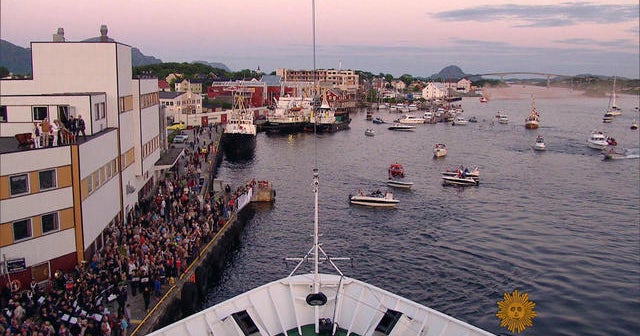Discovering Norway’s Enigmatic Slow TV: A Journey into Tranquility
In a world where the relentless pace of life often leaves us breathless, Norway’s Slow TV phenomenon emerges as a refreshing antidote. This unique form of television invites viewers to unwind and reconnect with nature through extended broadcasts that capture serene landscapes and everyday activities. As its popularity spreads beyond Norway’s borders, Slow TV challenges the fast-paced media environment, offering a meditative escape that captivates audiences worldwide.
The Essence of Slow TV
Originating in Norway, Slow TV began with the broadcast of a seven-hour train journey from Bergen to Oslo in 2009. This groundbreaking program showcased the stunning Norwegian landscape while providing a tranquil viewing experience. Unlike traditional television formats that prioritize fast-paced editing and dramatic storylines, Slow TV embraces a languid narrative style, encouraging viewers to immerse themselves in the moment.
A Cultural Trend Redefining Relaxation
As societal norms shift towards mindfulness and well-being, Slow TV resonates with audiences seeking solace in a chaotic world. The genre has expanded to include broadcasts of activities such as knitting, wood-burning, and even salmon fishing, emphasizing the simplicity of everyday life. This cultural trend not only promotes relaxation but also fosters a deeper appreciation for nature and the art of slowing down.
Psychological Benefits of Slow TV
- Stress Reduction: Engaging with Slow TV can lead to lower stress levels, as viewers are encouraged to breathe, reflect, and absorb their surroundings.
- Mindfulness: The immersive nature of Slow TV promotes mindfulness, allowing viewers to be present and engaged with their environment.
- Connection to Nature: Slow TV fosters a reconnection with nature, which is increasingly vital in our technology-driven lives.
The Global Impact of Slow TV
The success of Slow TV in Norway has sparked interest internationally, with various countries experimenting with similar formats. In the United States, for example, public broadcasting stations have begun to explore extended nature documentaries that emulate the Slow TV ethos. This shift reflects a growing desire for content that prioritizes tranquility over tension.
Technological Evolution and Accessibility
As streaming platforms gain traction, Slow TV is becoming more accessible to a global audience. Services like Netflix and YouTube offer a plethora of Slow TV content, allowing viewers to unwind at their convenience. This technological evolution not only broadens the reach of Slow TV but also integrates the genre into modern viewing habits.
The Future of Slow TV
Looking ahead, the Slow TV movement is poised for continued growth. As mental health becomes an increasingly prominent topic in public discourse, the demand for content that fosters relaxation and mindfulness is likely to rise. Broadcasting companies may invest more in Slow TV productions, further diversifying the genre and enhancing its appeal.
Conclusion: Embracing Tranquility
In an era dominated by rapid-fire content and constant stimulation, Norway’s Slow TV offers a much-needed respite. By inviting audiences to engage with the world at a slower pace, it challenges conventional media norms and celebrates the beauty of simplicity. As the Slow TV phenomenon continues to evolve, it encourages us all to embrace tranquility, reflect on our surroundings, and find peace amid the chaos of modern life.
See more BBC Travel World



